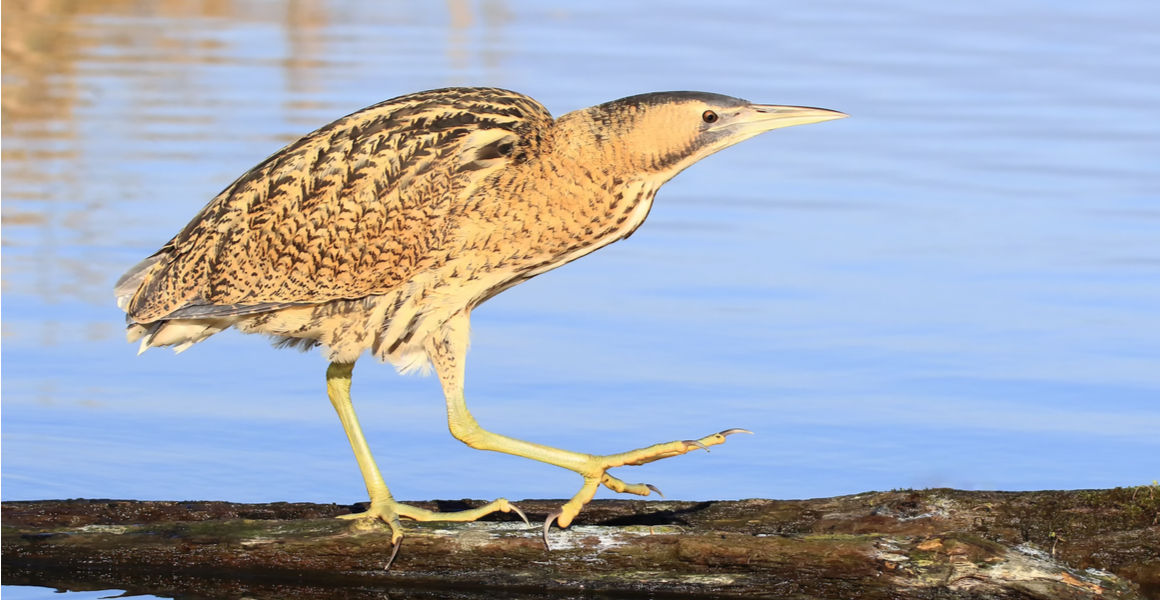Britain's loudest bird has come back from the brink of a second extinction.
After being driven out by the Victorians, bittern are now spreading into areas of the country they haven't been seen in for centuries.

Populations of the Eurasian bittern, or great bittern, are recovering in the UK. Image © Ildiko Laskay/Shutterstock
Britain's loudest bird has come back from the brink of a second extinction.
After being driven out by the Victorians, bittern are now spreading into areas of the country they haven't been seen in for centuries.
A bird whose call is as loud as a jet taking off has bounced back in England.
The bittern was previously wiped out across the UK during the late nineteenth century as the reedbeds where it lived were drained. While bitterns returned to England in the 1900s, the population began to fall again so that in 1997 only tens of the birds remained.
Concerted conservation efforts have now seen populations of the birds reach into the hundreds as the males' distinctive call returns to sites across England. The birds are now moving further north, with hopes they could one day return to Scotland and Ireland.
Simon Wotton, senior conservation scientist at the Royal Society for the Protection of Birds (RSPB), says, 'Bitterns are one of [the UK's] most charismatic birds. Their astonishing recovery from the brink of extinction is a real conservation success story and example of what is possible through targeted efforts to restore wildlife habitat.
'It's a delight to hear their distinctive booming call echoing across the reedbeds every year as more and more bitterns are making new or restored wetlands their home.'
As the birds return to their former homes across the UK, there are calls for more legal protections to be put in place to stop bittern nests being disturbed.

Living in reedbeds, the bittern's colouration helps them blend in. Image © Tony Mills/Shutterstock
Bitterns are a member of the family of birds which includes herons and egrets. There are many different species of bittern which live around the world, with the Eurasian bittern found in the UK.
Though they are relatively large birds, they are quite difficult to find. Living in dense reedbeds, their brown colouration camouflages them against the background. As a result, their numbers are often estimated based on the distinctive booming calls made by males during the mating season.
These calls, which can reach volumes of around 100 decibels, were compared to the noises of a bull by early naturalists. This description is suggested as the reason for the bittern's name, being derived from words for bull and hawk.
While the species is widespread across Europe, it has been under threat in the UK for the past two centuries. As it depends heavily on reedbeds to live and reproduce, the draining of these areas in the nineteenth and twentieth centuries, alongside persecution by egg collectors, drove it to local extinction in the country.
It became extinct across the UK and Ireland in around the 1880s, though made a return to Norfolk in the early 1900s. The birds started to recover throughout the nineteenth century with around 80 booming males recorded in the 1950s, but populations fell once more until there were only 11 booming males.
Since then, efforts to restore reedbeds and create a network of suitable sites have helped to turn this around, with 160 booming males recorded during counts in 2016.

RSPB Middleton Lakes saw bittern breed there for the first time in 2021. Image © Erni/Shutterstock
Having re-established themselves in the southeast of the UK, bitterns are now spreading further across England than at any time in recent memory.
The RSPB's reserve at Middleton Lakes, near Tamworth, saw five chicks successfully raised at the site in 2021, which is the first time the birds have been known to breed in the West Midlands in at least 135 years.
Meanwhile, RSPB Burton Mere Wetlands, near Chester, recorded its first breeding bitterns last year, while sites across the north of England received record visits by bitterns as their populations continue to recover.
While the birds are currently doing well, there are concerns that the species could still be tipped back into a decline. While many breeding grounds have been designated as Special Protected Areas (SPAs), these haven't kept pace with the movement of bittern.
In 2019, it was estimated that only 23% of nesting sites for the birds were inside specifically designated SPAs. This is down from around 90% in the 1990s.
Furthermore, coastal reedbeds are increasingly at risk from rising sea levels as a result of climate change. This may require establishing more inland reedbeds as seawater begins to encroach upon these habitats.
Despite these challenges, the bittern continues to prosper in England, and may one day reach sites in Scotland and Ireland, where it is currently a rare winter visitor. Given time, its distinctive booming call may become a familiar sound across the country.

Find out about the plants and animals that make the UK home.
Don't miss a thing
Receive email updates about our news, science, exhibitions, events, products, services and fundraising activities. We may occasionally include third-party content from our corporate partners and other museums. We will not share your personal details with these third parties. You must be over the age of 13. Privacy notice.
Follow us on social media